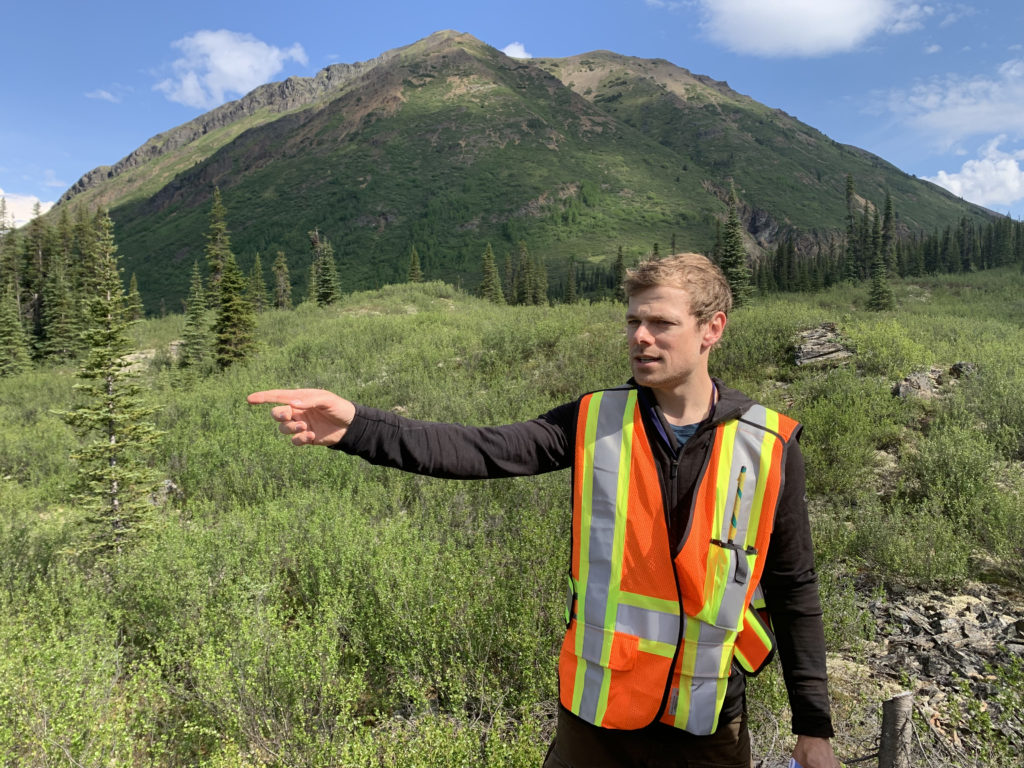“It’s the kind of deposit that you could build a major around,” Snowline CEO Scott Berdahl told The Northern Miner in early May. “We’re very fortunate to have found something like it and so pushing [the project] ahead is exactly what we’re doing.”
The update comes after months of strong drill results for Valley and a 37% rise in the share price this year to date. Snowline, backed by B2Gold (TSX: BTO) with a 9.9% stake, intends to file a preliminary economic assessment this month.
Tombstone’s golden crown
Valley, part of Snowline’s larger Rogue project about 380 km northeast of Whitehorse, hosts 204 million measured and indicated tonnes grading 1.21 grams gold per tonne for 7.94 million contained ounces. Inferred resources total 45 million tonnes at 0.62 gram gold for 890,000 contained ounces.
Banyan’s AurMac in west-central Yukon holds 347.5 million inferred tonnes grading 0.63 gram gold for 7 million ounces.
The deposit at Victoria Gold’s former Eagle mine site is third largest, with 234 million measured and indicated tonnes grading 0.59 gram gold for 4.4 million contained ounces; and 36 million inferred tonnes at 0.63 gram gold for 700,000 ounces.
Valley’s quality is highlighted by consistent conversion to higher categories, including 40% of the total measured and indicated tonnage now classified as measured, BMO capital markets analyst Brian Quast said in a note.
“This compares to the previous [estimate] which had no previous measured resource,” he said.
Pointing to Snowline’s grade analysis for the resource update, Quast also noted its low sensitivity to cut-off grades. Snowline states that its break-even price of gold for the 0.6 gram gold cut-off would be US$1,225 per ounce. The update’s baseline cut-off grade is 0.3 gram gold.
”This continues to demonstrate the deposits’ resilience to increased cost assumptions and/or a decrease in the gold price,” Quast said.
Challenges
While it could be years until the specifics of a mine at Valley take shape, the aftermath of the disaster at Eagle last year still hangs over Yukon, with heap leaching raising major environmental concerns.
Though Valley was envisioned as an open pit and mill scenario, even before the Eagle landslide, Berdahl said the accident raised valid concerns about mining in the territory while also underscoring its value for Yukon.
“There’s a lot of talk about how to replace this and move forward responsibly,” he said. “How to replace this void in the [Yukon] economy? Approaching projects in a measured and responsible way is increasingly important as we move forward.”
Infrastructure optimism
Despite Valley’s mother lode, it lacks reliable road access and power connections. The nearest towns are Ross River, 200 km to the south, and Mayo, 223 km to the east.
But what used to be a major hurdle might prove to be a bump after the Yukon government last October passed its Resource Roads Regulation that allows mining companies to build roads to their projects if they obtain the proper permits from the government. The regulation also provides a clear framework for that purpose, while previously the regulatory framework was less organized. The companies are responsible for reclamation of the roads after they’re no longer needed.
“That is a huge boom to move a lot of different projects forward,” Berdahl said.
Snowline was also encouraged by Fireweed Metals (TSXV: FWZ; US-OTC: FWEDF) securing more than $35 million from the U.S. Department of Defense and Canada’s Critical Minerals Infrastructure Fund last December for roads and power for its Macmillan Pass and Mactung projects. MacMillan Pass is about 150 km northeast of Valley.
“It’s good to see somebody else working on sort of the same infrastructure challenges in the same district. The potentials for synergies there [would] be more broadly applicable,” Berdahl said.
‘Growth stage’
The wider industry has noticed Snowline’s progress under Berdahl as well, with the Young Mining Professionals last year granting him a Peter Munk Award.
Snowline’s progress with Valley puts it past the “exuberant discovery” stage of the Lassonde curve of mine development, Berdahl said, and is now somewhere in the growth stage.
“We have a clear path, especially in the backdrop of the current world environment to continue to just de-risk this project at a good pace and continue to add value, slow and steady for our shareholders, or fast and steady, if we can manage it,” he said. “The consistency of Valley is one of its best attributes.”
He declined to say if Snowline is seeking to be acquired.
“There are any number of candidates, B2Gold among them,” he said. “I don’t want to stir any speculation that they are. Any producer interested in a high-quality gold asset is a potential candidate.”
Yellow metal tailwinds
While the gold price has gained about 25% this year, touching an historic high of $3,500 per oz. on April 22, Berdahl takes a measured approach to its rise.
“It’s great to see,” he said. “We’ve yet to see this bull market really pull up a lot of the junior space. Majors are getting a very nice tailwind from it, and we’re kind of in that area between the haves and the have nots.”
But even if gold lost about half of its current value, he said he would still be excited to push Valley forward.
“It makes what we’re doing that much more valuable. But we’re fortunate to have the kind of asset that doesn’t need that tailwind to move forward.”




